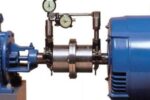Why would two companies decide to engage in a horizontal acquisition?

Horizontal acquisition, defined.
Many companies acquire other companies or agree to get acquired for various reasons. Some agree with an acquisition, and some think that it will help or save the company. There is a specific one called “horizontal acquisition,” where one company acquires another. But here is the thing: it is unlike the typical acquisition that we know. There is something special about this type of acquisition, both companies are in the same circle, industry. They also have a similar production stage.
So, why the horizontal acquisition?
If we say acquisition, we usually think that the company will be entirely different. But, it is not the case for horizontal acquisitions. Yes, a horizontal acquisition may bring the company more means to produce more products. However, it does not mean that there will be a drastic change for the whole company. In these situations, the acquirer benefits because it has more capacity than before without changing the primary business operations that it used to do.
These two companies agree that it is worth the shot if they work together than being stand-alone. If they are combined, they have a better chance at the competition because they will have more market shares and scalability.
Companies and acquisitions
Let us further elaborate on what happens around a horizontal acquisition. We have already established that both companies in a horizontal acquisition produce similar goods or services. Also, they create these goods and services at a similar point in the production cycle. Now, the new entity from the two companies’ combination can produce more. It also has a great shot at better market shares. So, what if they are not in the same stage in the production? The equipment cannot overlap and be as worthy to the acquirer.
It makes sense that not every company that decides and agrees on this type of acquisition goes well. Sometimes, it can be tough, especially if the two companies have very different ways and cultures. Hence, other companies make variations or choose various types of acquisitions. They may just opt to take equipment or operations control in the production cycle’s long run. Horizontal acquisition lets companies get a better chance at a broader customer base.
If there is a horizontal one, then there is a vertical one.
We cannot have horizontal if there is no vertical, can we? Here, the companies involved are also in the same industry. However, they are not in the same stage of the production cycle. The acquiring company can have equipment. That equipment can be a backward vertical integration, which is more upstream from the end client. It can also be a forward vertical integration, which is more downstream at the end client. In short, the acquiring entity gains the most power when it comes to production.
Is a horizontal acquisition beneficial to companies?
There are many reasons why a company would engage in such an agreement. However, horizontal acquisitions are made primarily in high hopes that they will do better than harm. The goal is to reduce competition, product offering diversification, new product innovations, growth, new markets, and more by the said acquisition.






